
Ok the hard part’s over. The car shipping company got your vehicle to it’s destination. Phew. All set right? Not so fast.
Now the inspection comes in. When you accept delviery, you should inspect your vehicle. No matter if you received door-to-door car delivery service, open auto transport, closed auto transport, or expeditated terminal-to-terminal auto shipping, always check!
You have to make sure all the nuts and bolts are right where they should be. Let this post-car shipping checklist is your guide. We’ll cover how to examine your car, assess for damages, calculate car shipping costs, and more.
The Post Car Delivery Checklist
| Where To Check | What to Check |
|---|---|
| Inspect Vehicle Condition with Driver | Check the vehicle’s exterior and interior condition with the transport driver present to note any damages. |
| Document Mileage and Fuel Level | Record the vehicle’s mileage and fuel gauge reading upon delivery to ensure nothing unusual occurred during transport. |
| Secure a Copy of the Bill of Lading | Obtain a signed copy of the Bill of Lading, which documents the vehicle’s condition before and after shipping. |
| Exterior Damage Check | Look for any new scratches, dents, or damage on the paintwork, doors, hood, trunk, and undercarriage. |
| Interior Damage Check | Check the dashboard, seats, and other interior elements for damage, ensuring all electrical components work properly. |
| Mechanical Check | Ensure fluids (engine oil, brake fluid, coolant) are at appropriate levels and check for any mechanical issues. |
| Take Date-Stamped Photos | Take photos of the vehicle’s condition, documenting any damages with date stamps for future reference. |
| Notify Insurance Provider | Send post-delivery documentation, including condition reports and photos, to your insurance company. |
| Monitor for Unusual Behavior | Listen for odd sounds and check for any handling issues as you begin using the vehicle post-shipping. |
| Gradually Reintroduce Vehicle to Regular Use | Start with short trips and slowly return the vehicle to regular use to avoid overstressing it. |
Immediate Actions Upon Vehicle Arrival: Post car shipping checklist
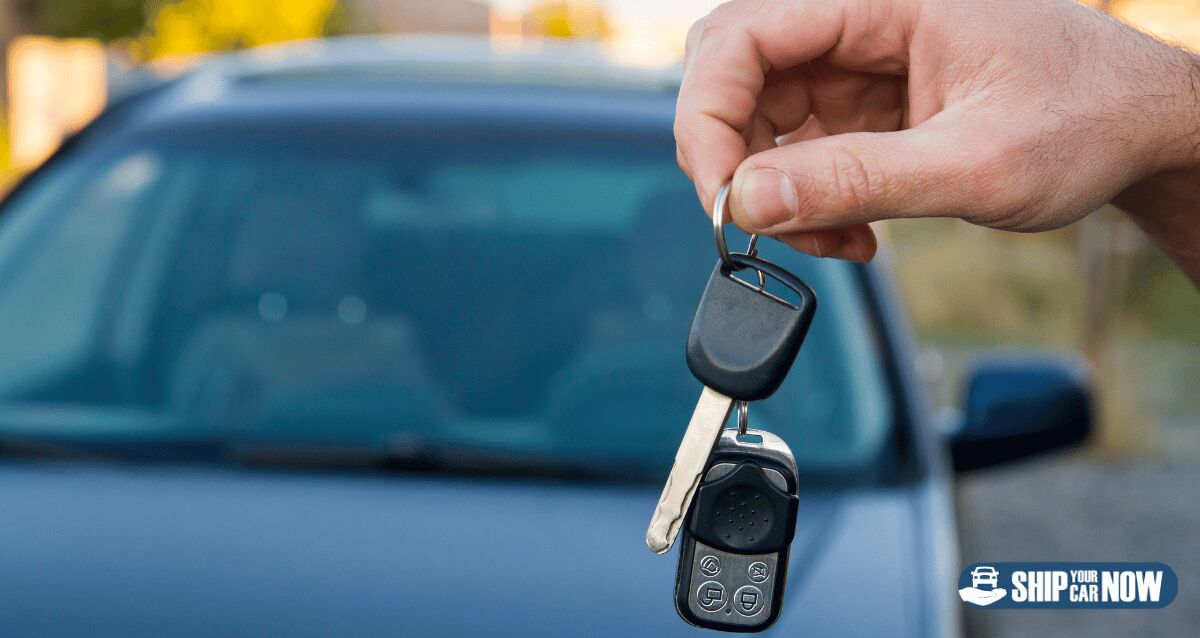
Ok, so the car has arrived, what’s next? The final step in the car shipping process begins as soon as your vehicle is delivered.
- Confirm the condition of your car with the transport driver
- Record both mileage and fuel gauge readings
- Obtaining a copy of the delivery bill of lading
Each step is conducted meticulously is fundamental for safeguarding your vehicle’s integrity throughout its journey with an auto transport service.
Also be sure to check out our complete 2024 checklist for car transport preparation.
Verify the Car’s Condition with the Transport Driver
Straight from the horse’s mouth, that’s the saying. It’s good to get everyone on the same page so ask the driver how the trip was and if there’s anything he has to call out.
- If you notice any discrepancies or damages at this time, don’t hesitate to discuss your concerns with the driver.
- Comparing your pre-shipment photos with the current condition of your vehicle during this examination offers a prime chance for verification against its previous status before being transported.
Always keep in mind that having well-documented photographic evidence—clearly marked with time, date, and location—is an effective safeguard against unwarranted damage claims in future interactions.
Document Mileage and Fuel Level

Step number 2 in our car shipping checklist is to record your vehicle’s mileage.
Equally important is monitoring the fuel gauge. Ensure that, before transport, your car’s gas tank is filled no more than a quarter tank.
Once your vehicle arrives, check that there hasn’t been a substantial change in fuel level during its journey. Adhering to these protocols guarantees precise record-keeping and assists in pinpointing potential issues with the car post-shipping.
Secure a Copy of the Delivery Bill of Lading
What the heck is a Bill of Lading? It’s a fancy way of saying a legal receipt of work performed. The Bill of Lading serves as your verification of the car’s state when it is delivered. It documents the vehicle’s condition both at pickup and upon delivery, which is pretty important if you decide to lodge a claim for damages later on. Getting a signed copy of this a great way to maintain an authenticate your vehicle’s status the moment it was handed over.
If there are any inconsistencies or disagreements regarding the condition of your car, this document will serve as critical evidence in settling such matters.
The Nitty Gritty: Comprehensive Inspection Post-Shipping
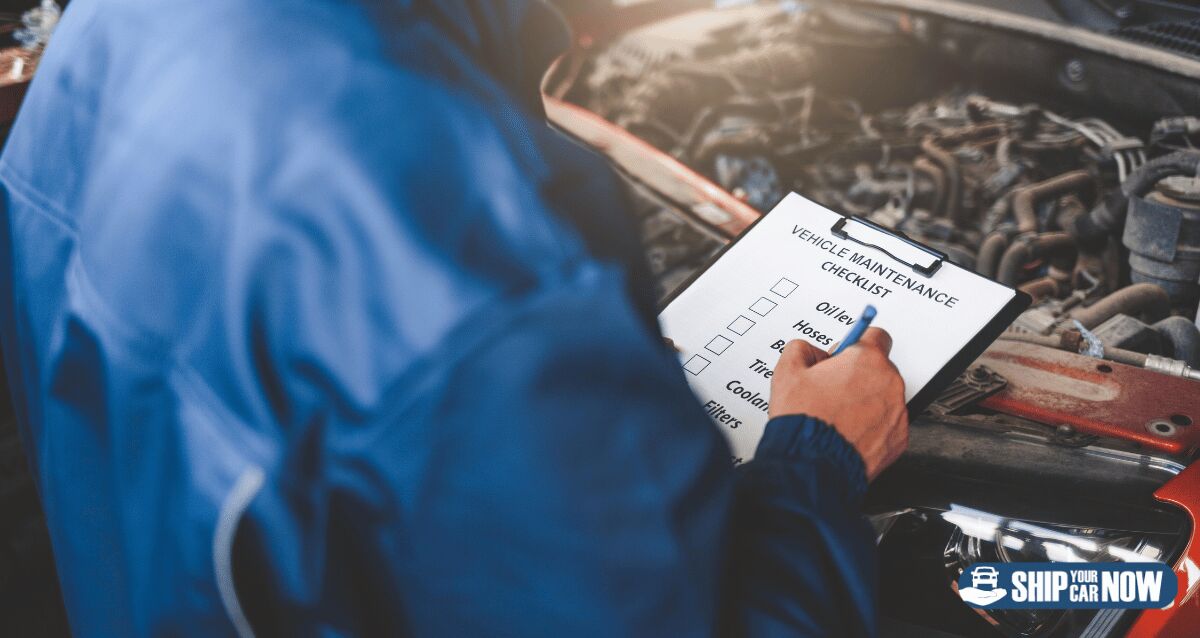
Next up, more checks.
It’s important to thoroughly inspect your car following its transport for any potential damages or irregularities that could have arisen throughout the transit process. A careful inspection will focus on all elements of your car.
NOTE: If you took pictures before your car was shipped, now you are prepared to thoroughly undertake this critical part of the car shipping checklist. Good thinking!
If you did not take pics, that’s okay too. It means it will be a little more difficult to prove damages but not impossible. If you are confident that your car was damaged during transport, say something!
Exterior Check for New Damage
The external surface of your vehicle acts as the primary shield against environmental factors. It is super important to scrutinize specific sections for any fresh scratches, dents, or other imperfections.
- The paintwork
- Doors
- Hood (bonnet)
- Trunk (boot lid)
- Area around the engine bay
- Location of the spare tire
- Windshield
It’s important not to overlook an inspection of the undercarriage and tires since these parts may have been damaged while in transit.
A meticulous examination of your car’s exterior can uncover defects that may have emerged during its journey through the shipping process.
Interior Review for Personal Belongings

Now let’s get into the weeds a little here. Most car shipping companies aren’t going to spend much time in your car, but it’s important to check anyway. It’s just good to be safe. Search for any signs of damage or changes. Assess whether all electrical components are functioning properly and remain undamaged.
- Dashboard
- Seats
- Door panels
- Floor mats
The goal is to ensure that every component inside your car—from windows to seat belts—is in proper working order and free of water intrusion.
Mechanical Assessment for Hidden Issues
Let’s get into the real nuts and bolts. Post-transportation inspections are necessary to verify that no problems arose during shipping, and this includes evaluations of:
- Engine oil level,
- Coolant status,
- Brake fluid quantity, and
- Power steering fluid amount.
Taking the vehicle for a brief test drive can yield valuable insights into its performance capabilities, such as acceleration, braking efficiency, and steering precision. This not only guarantees seamless functionality but also helps pinpoint any underlying issues.
Post-Delivery Documentation

It’s time to get all the post-delivery paperwork. This helps keep track of any damage that might have happened during shipping, which is key for filing insurance claims or sorting out issues with the delivery company. Make sure to take time-stamped photos of the vehicle’s condition and let your insurance company know. Keeping good records can be your best backup if there’s a disagreement.
Take Date-Stamped Photos
Technology really does make life easier sometimes… not all the time, but definitely some of the time.
In today’s digital world, taking date-stamped photos is a simple but powerful way to document the condition of a vehicle when it’s delivered.
These photos provide proof of the vehicle’s state at a specific time, which can be really helpful if any disagreements come up or if you need to file an insurance claim. It’s important to understand that good documentation isn’t just about keeping records. It means taking clear, timely photos that can help back you up during any insurance disputes related to auto transport.
Update Insurance Company
Once you’ve gathered all the needed documents and date-stamped photos, make sure to let your insurance company know. Share detailed condition reports and post-delivery photos with them, so they have accurate info about your car’s current condition. This is also a good time to think about whether you might need extra coverage for your car based on its condition.
Good communication is key in these situations. To make sure you have enough insurance coverage, keep your insurance provider in the loop about any updates or changes with your car.
Addressing Discrepancies and Filing Claims

Who loves talking to insurance companies? But they can be helpful if you have all the right information. And sooner rather than later is always the name of the game in these situations. There is a time limit on claims so act quickly.
Initiate an Insurance Claim
If your vehicle gets damaged, it’s a good idea to file an insurance claim. The Bill of Lading is a key document for this, as it shows the vehicle’s condition before and after transport, and notes any new damage. You’ll also need to provide proof, like photos, showing your vehicle’s condition before and after the trip to support your claim.
If you can’t resolve the issue directly with the transport company, you have a few options. You could ask the broker who set up the service to help, file complaints with federal agencies that handle these cases, or take legal action against the company if needed.
Follow Up with the Auto Transport Company
Staying in regular contact with the auto transport company during the claim process is important. Keeping in touch helps you:
- Stay updated on the status of your damage claim
- Keep communication open, especially for insurance-related issues
- Help move the process along for a quicker resolution
Filing a claim is just the first step. You need to actively follow up until everything is settled.
Maintaining Your Vehicle After Shipping
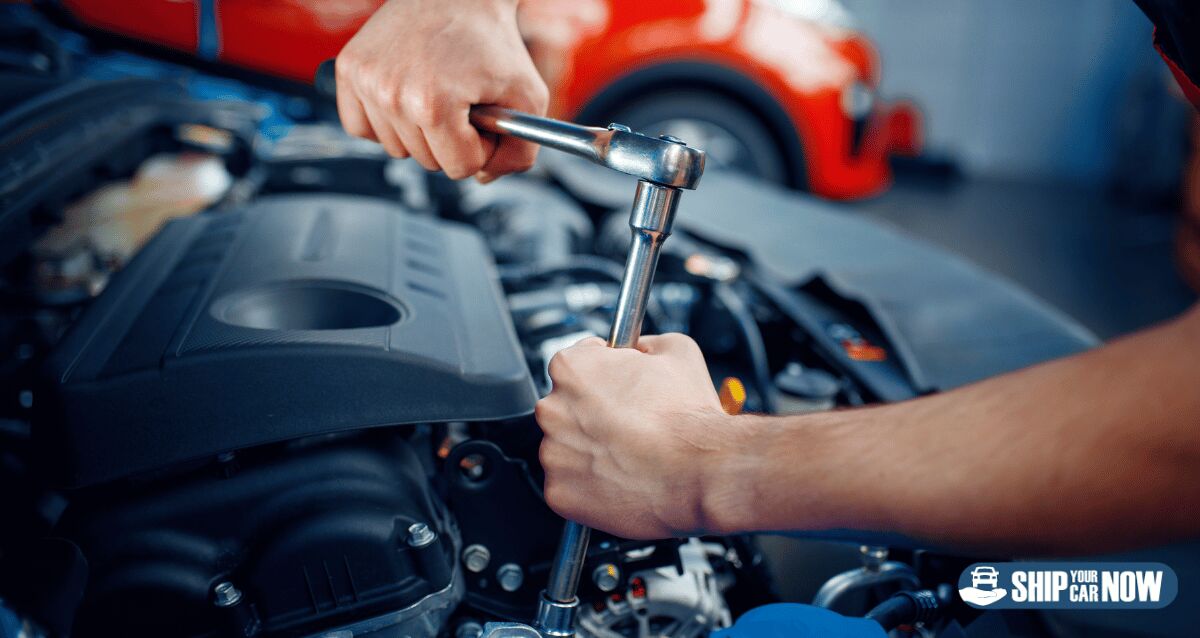
After completing the initial processes that follow shipping, attention turns to maintaining your vehicle. This involves periodic reviews, monitoring tire pressure and fluid levels, and arranging for a service appointment.
Ensuring routine maintenance is conducted on your car helps it function at its optimal level, retain dependability, and uphold its value in the event of resale.
Check Tire Pressure and Fluid Levels

After shipping a vehicle, it is vital to inspect the tire pressure because tires may experience issues such as cracks, deflation, or punctures that could negatively affect performance and safety. It’s also necessary to check fluid levels and top up any that are depleted to confirm that tires have been inflated according to the recommended PSI from the manufacturer.
Schedule a Maintenance Check-Up
Remember, regular maintenance is key to spotting and fixing any potential problems early, helping to keep your car in good shape for the long run.
Safe Driving Post-Transport

After a comprehensive inspection and maintenance, your vehicle is ready to hit the road. Yet, embarking on safe transport requires more than simply jumping in and setting off. You should ease the vehicle into consistent usage while keeping an eye out for any irregular performance during this stage.
Gradual Introduction to Regular Use
When getting your vehicle back to regular use after shipment, it’s a good idea to take it slow. Start with short trips to avoid putting too much strain on the car, especially if it hasn’t been driven for a while. Gradually increasing your use over time helps the vehicle ease back into normal operations after being shipped.
By gently reintroducing your vehicle to regular driving, you can help ensure a smooth transition and even extend its lifespan.
Monitor for Any Unusual Behavior
As you start using your car more after transport, it’s important to stay alert for anything unusual. Pay attention to odd noises like rattling or clunking, which could mean damage happened during shipping. Keep an eye on how the car handles—any strange vibrations or issues with steering could also be signs of damage. Catching these problems early is key to keeping your car running smoothly and lasting longer.
Smooth Sailing: ShipYourCarNow’s Stress-Free Car Shipping Experience
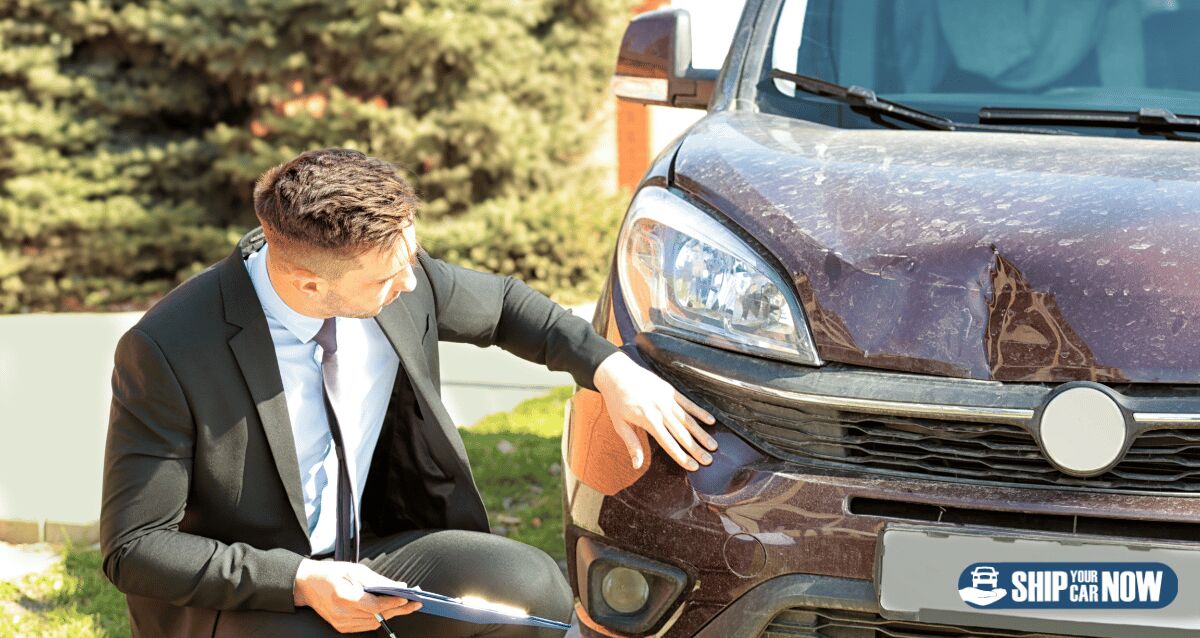

Ok yes, we are biased. But we’ve been in this business for decades and as the number 1 trusted car shipping company, we think it’s good to let it be known!
The car shipping process can feel overwhelming, but with ShipYourCarNow, a top car shipping company by your side, it becomes a breeze. We stand out from other car shippers by offering a wide range of services designed to fit your specific needs.
We provide everything from door-to-door delivery to expansive coast-to-coast and international transportation options.
ShipYourCarNow is dedicated to moving cars efficiently and maintaining open communication with clients about every aspect of the transport service.
We Can Help!
The journey of car shipping does not end with your vehicle’s arrival. At ShipYourCarNow we provide car shipping service in excellence with easy door-to-door car shipping – contact us today for an instant quote!
Be sure to visit some of our popular state car shipping pages to learn more about auto transport prices.
- California Car Shipping Service
- Colorado Car Shipping Services
- Florida Car Shipping Service
- New Jersey Car Shipping Service
- New York Car Shipping Service
Frequently Asked Questions
What immediate actions should I take upon vehicle arrival?
When your vehicle is delivered, ensure a thorough check of its condition alongside the transport driver. Take note of its mileage and fuel gauge reading, and obtain a copy of the bill of lading from delivery to confirm that everything is in order for a seamless transfer.
What does a comprehensive inspection post-shipping involve?
A comprehensive inspection post-shipping involves checking for new exterior damage, reviewing the interior for personal belongings, and conducting a mechanical assessment for hidden issues.
Proper post-shipping inspection is crucial in ensuring the condition of the vehicle upon arrival.
What is the importance of post-delivery documentation?
Documentation following delivery is crucial because it records any damage that may have occurred during the shipping process. This documentation facilitates filing insurance claims and settling differences with the shipping company, thereby ensuring responsible accountability and conflict resolution.
How do I address discrepancies and file claims?
When discrepancies arise, utilize the bill of lading alongside any other documented evidence to pinpoint and record any fresh damage. Proceed by lodging an insurance claim and maintain communication with the auto transport company for follow-up.
How should I maintain my vehicle after shipping?
Once your vehicle has been shipped, it is essential to inspect the tire pressure and fluid levels, as well as arrange for a maintenance inspection to guarantee both peak operation and extended service life.
How do I ship a car?
You can ship a car either through a broker or directly through a carrier. Brokers typically don’t own the trucks but coordinate the shipping process, while carriers own their transport vehicles. The choice between a broker and a carrier depends on your specific needs, budget, and schedule [1].
How long does it take to ship a car?
The time it takes to ship a car can vary due to factors like traffic, weather, and the shipping company’s schedule. Generally, companies offer a window of five to seven days for pick-up and drop-off. If you require your car by a specific date, it’s important to communicate that with the shipping company [2].
How much does it cost to ship a car?
The cost to ship a car varies and can range from $0.50 to $1.70 per mile. Factors influencing the price include the type of transport (open or enclosed), distance, and seasonal demand. Enclosed transport, which offers more protection, is more expensive as fewer cars can be transported at once [3].

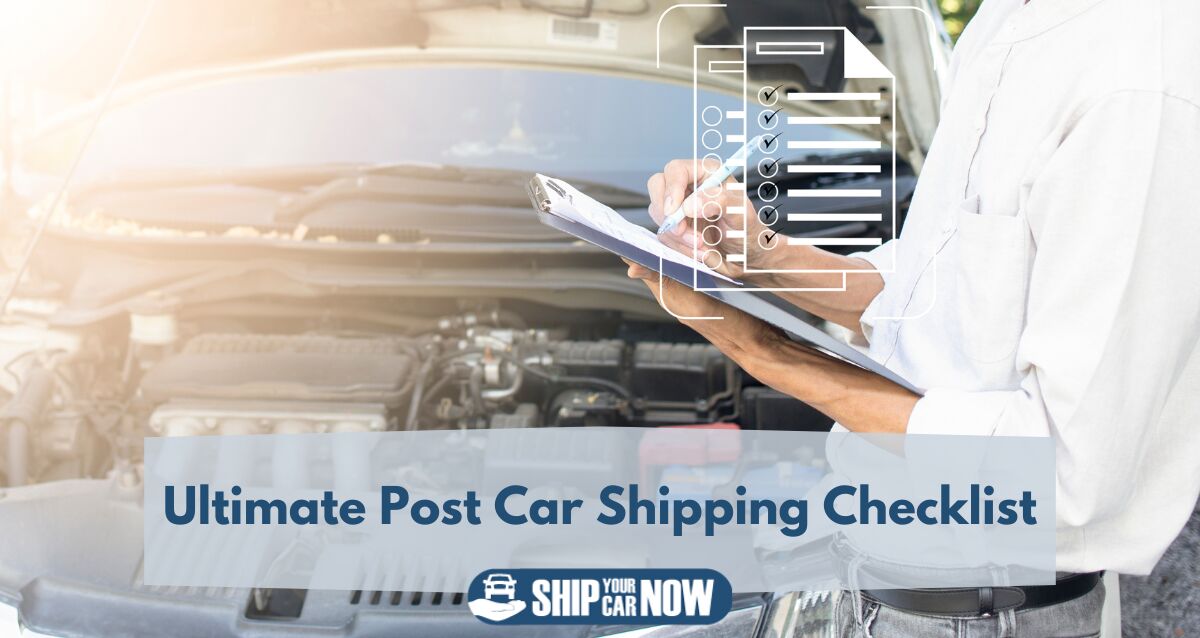

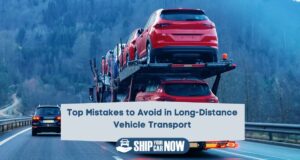


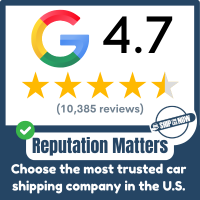

Senior automotive logistics professional with a passion for the industry and a 10+ year history of accomplishments. Proven track record of exemplary client management working with both RMCs, Van Lines and OEMs. Keen ability to react to an ever-changing marketplace while offering superior technology solutions, programs and services. Architect of award winning auto transport portal technology offering transparency and agility to clients, agents and transferees. Successful team builder and leader easily managing budgets with effective leadership, strategic planning, and problem-solving capabilities.